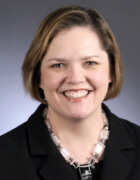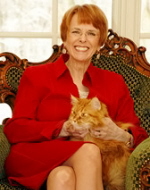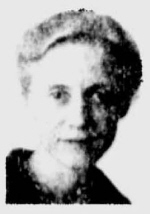Will Margaret Anderson Kelliher Break the Upper Midwestern Glass Ceiling?
Just 17 women have appeared on the gubernatorial ballot in 257 elections across Minnesota, Iowa, South Dakota, and Wisconsin; only 2 from major political parties
 Upon receiving the DFL endorsement for governor late Saturday evening, outgoing Minnesota House Speaker Margaret Anderson Kelliher took one big step toward achieving something no Minnesotan (or Iowan, South Dakotan, or Wisconsinite) woman has ever done before: win a gubernatorial election.
Upon receiving the DFL endorsement for governor late Saturday evening, outgoing Minnesota House Speaker Margaret Anderson Kelliher took one big step toward achieving something no Minnesotan (or Iowan, South Dakotan, or Wisconsinite) woman has ever done before: win a gubernatorial election.
Of course, Anderson Kelliher is still a few steps away from that achievement.
First, the House Speaker will need to win the DFL primary – a primary which will include, for the moment, former U.S. Senator Mark Dayton, former legislator Matt Entenza, and Ramsey County Attorney Susan Gaertner.
If she wins the DFL primary, Anderson Kelliher is likely to be the only woman on the gubernatorial ballot across the Upper Midwest this year, as no other woman has yet announced her candidacy (from major or third parties) in Iowa, South Dakota, or Wisconsin. Each state will hold gubernatorial contests this November.
Anderson Kelliher would then not only become the first woman from a major party on the gubernatorial ballot in Gopher State history, but only the third to appear from a major party across Iowa, Minnesota, South Dakota, and Wisconsin.
Anderson Kelliher would join Iowa Democratic candidates Roxanne Conlin (1982) and Bonnie Campbell (1994) as the third woman from a major party to make it to the general election in the race for governor in the four-state region.
 Conlin (pictured), who is running in Iowa for the Democratic slot to challenge U.S. Senator Charles Grassley this November, currently holds the benchmark for women across these four states, by winning 46.5 percent of the vote back in 1982 against Republican Terry Branstad.
Conlin (pictured), who is running in Iowa for the Democratic slot to challenge U.S. Senator Charles Grassley this November, currently holds the benchmark for women across these four states, by winning 46.5 percent of the vote back in 1982 against Republican Terry Branstad.
Campbell won 41.6 percent against Branstad in 1994.
Only one other woman from Minnesota, Iowa, South Dakota, or Wisconsin has cracked even the 1 percent mark in a gubernatorial election.
In South Dakota’s 1922 contest, Alice Lorraine Daly came in third place among three candidates, but received an impressive 26.2 percent of the vote as the Non Partisan candidate for governor. Daly came within 2.5 points of beating the Democratic candidate, Louis Crill, for second place.
Overall, only 17 different women have appeared on the ballot for the 257 gubernatorial elections that have been held in Minnesota, Iowa, Wisconsin, and South Dakota since statehood.
And of the 962 gubernatorial candidates that have received ballot access across these four states, just 21 have been women (2.2 percent).
In South Dakota, Alice Lorraine Daly is the only woman out of 151 candidates across 52 gubernatorial contests to appear on the general election ballot (0.7 percent of all candidates).
In Minnesota, just 6 of the 266 gubernatorial candidates who have appeared on the 64 general election ballots have been women (2.3 percent):
· Jane VanDeusen, 1974, Socialist Workers, 0.7 percent, 5th of 8 candidates
· Genevieve Gunderson, 1974, Industrial Government, 0.2 percent, 7th of 8 candidates
· Jill Lakowske, 1978, Socialist Workers, 0.4 percent, 4th of 7 candidates
· Kathy Wheeler, 1982, Socialist Workers, 0.6 percent, 3rd of 5 candidates
· Wendy Lyons, 1990, Socialist Workers, 0.4 percent, 6th of 6 candidates
· Kari Sachs, 2002, Socialist Workers, 0.1 percent, 6th of 7 candidates
Genevieve Gunderson was previously the Socialist Workers Party Vice-Presidential nominee in 1972. The Louis Fisher/Gunderson ticket came in sixth place nationally garnering 53,814 votes (0.07 percent).
In Iowa, just 6 of the 250 candidates who have gained ballot access across the Hawkeye State’s 70 gubernatorial elections have been women (2.4 percent):
· Roxanne Conlin, 1982, Democrat, 46.5 percent, 2nd of 2 candidates
· F. Nan Bailey, 1990, Socialist Workers, 0.4 percent, 3rd of 3 candidates
· Bonnie Campbell, 1994, Democrat, 41.6 percent, 2nd of 6 candidates
· Veronica Wells Butler, 1994, Natural Law, 0.4 percent, 4th of 6 candidates
· Wendy Barth, 2006, Iowa Green, 0.7 percent, 3rd of 5 candidates
· Diana Newberry, 2006, Socialist Workers, 0.2 percent, 5th of 5 candidates
And in Wisconsin, only 8 of the 295 gubernatorial candidates across 71 elections since statehood have been women (2.7 percent), with five of these candidacies launched by the same woman:
· Georgia Cozzini, 1942, Socialist Labor, 0.1 percent, 6th of 6 candidates
· Georgia Cozzini, 1944, Socialist Labor, 0.1 percent, 5th of 5 candidates
· Georgia Cozzini, 1948, Socialist Labor, 0.0 percent, 6th of 6 candidates
· Georgia Cozzini, 1970, Socialist Labor, 0.1 percent, 4th of 6 candidates
· Myrtle Kastner, 1970, Progressive Labor Socialist, 0.0 percent, 6th of 6 candidates
· Georgia Cozzini, 1974, Socialist Labor, 0.1 percent, 7th of 7 candidates
· Adrienne Kaplan, 1978, Socialist Workers, 0.1 percent, 5th of 6 candidates
· Kathryn Christensen, 1986, Labor-Farm, 0.7 percent, 3rd of 5 candidates

Cozzini ran for the U.S. Senate in Wisconsin on the Socialist Labor ticket in 1946 (0.2 percent), 4th of 4 candidates), the special election of 1957 (0.1 percent, 5th of 5 candidates), 1958 (0.0 percent, 4th of 4 candidates), and 1962 (0.0 percent, 4th of 5 candidates).
Minnesota, Iowa, South Dakota, and Wisconsin are 4 of the 27 states in the nation who have never had a woman serve as governor. Only 20 states have elected a women into the governor’s office.
Female Gubernatorial Candidates in Minnesota, Iowa, South Dakota, and Wisconsin by Percentage of Vote Received
|
Name
|
State
|
Year
|
Party
|
%
|
Place
|
|
Roxanne Conlin
|
IA
|
1982
|
Democrat
|
46.5
|
2
|
|
Bonnie Campbell
|
IA
|
1994
|
Democrat
|
41.6
|
2
|
|
Alice Lorraine Daly
|
SD
|
1922
|
Non Partisan
|
26.2
|
3
|
|
Jane VanDeusen
|
MN
|
1974
|
Socialist Workers
|
0.7
|
5
|
|
Kathryn Christensen
|
WI
|
1986
|
Labor-Farm
|
0.7
|
3
|
|
Wendy Barth
|
IA
|
2006
|
Iowa Green
|
0.7
|
3
|
|
Kathy Wheeler
|
MN
|
1982
|
Socialist Workers
|
0.6
|
3
|
|
Jill Lakowske
|
MN
|
1978
|
Socialist Workers
|
0.4
|
4
|
|
F. Nan Bailey
|
IA
|
1990
|
Socialist Workers
|
0.4
|
3
|
|
Wendy Lyons
|
MN
|
1990
|
Socialist Workers
|
0.4
|
6
|
|
Veronica Wells Butler
|
IA
|
1994
|
Natural Law
|
0.4
|
4
|
|
Genevieve Gunderson
|
MN
|
1974
|
Industrial Government
|
0.2
|
7
|
|
Diana Newberry
|
IA
|
2006
|
Socialist Workers
|
0.2
|
5
|
|
Georgia Cozzini
|
WI
|
1942
|
Socialist Labor
|
0.1
|
6
|
|
Georgia Cozzini
|
WI
|
1944
|
Socialist Labor
|
0.1
|
5
|
|
Georgia Cozzini
|
WI
|
1970
|
Socialist Labor
|
0.1
|
4
|
|
Georgia Cozzini
|
WI
|
1974
|
Socialist Labor
|
0.1
|
7
|
|
Adrienne Kaplan
|
WI
|
1978
|
Socialist Workers
|
0.1
|
5
|
|
Kari J. Sachs
|
MN
|
2002
|
Socialist Workers
|
0.1
|
6
|
|
Georgia Cozzini
|
WI
|
1948
|
Socialist Labor
|
0.0
|
6
|
|
Myrtle Kastner
|
WI
|
1970
|
Progressive Labor Socialist
|
0.0
|
6
|
Data compiled by Smart Politics.
Follow Smart Politics on Twitter.

The DFL has managed to snatch defeat from the jaws of victory.
Once again, the DFL base continues to ignore the democrat centrists and the independent voters in Minnesota.
MAK’s nomination has handed a huge block of centrist voters to the IP candidate Tom Horner